Simulation Study on the Energy Utilization Efficiency of a Turbine Impeller Based on a Selective Laser Melting Process
Abstract
:1. Introduction
2. Research Methodology
2.1. Governing Equation
2.2. Heat Source Modeling
2.3. Energy Utilization Equation
3. Simulation
3.1. A Geometric Model of the Turbine Pump Impeller
3.2. Material and Process Parameter Settings
3.3. Simulation Results
4. Energy Utilization
5. Conclusions
- (1)
- With a constant laser power, increasing the laser scanning speed leads to a reduction in the thermal deformation of the part, exhibiting an approximately linear relationship.
- (2)
- When the scanning speed remains unchanged and the laser power is increased, the thermal deformation of the part also increases and eventually stabilizes.
- (3)
- Within a certain range of laser power, increasing the scanning speed can enhance energy utilization efficiency and shorten the printing time simultaneously.
- (4)
- Keeping the scanning speed constant while increasing the laser power might lead to a decrease in energy utilization efficiency. This can result in stronger thermal accumulation and an increase in thermal deformation of the formed part.
- (5)
- The maximum thermal deformation of the turbine pump impeller occurs at the edge of the base. Thus, in the actual manufacturing process, increasing the thickness of the base appropriately can ensure sufficient mechanical performance.
Author Contributions
Funding
Institutional Review Board Statement
Informed Consent Statement
Data Availability Statement
Conflicts of Interest
References
- Sun, C.; Wang, Y.; McMurtrey, M.D.; Jerred, N.D.; Liou, F.; Li, J. Additive Manufacturing for Energy: A Review. Appl. Energy 2021, 282, 116041. [Google Scholar] [CrossRef]
- Herzog, D.; Seyda, V.; Wycisk, E.; Emmelmann, C. Additive Manufacturing of Metals. Acta Mater. 2016, 117, 371–392. [Google Scholar] [CrossRef]
- Liu, G.; Zhang, X.; Chen, X.; He, Y.; Cheng, L.; Huo, M.; Yin, J.; Hao, F.; Chen, S.; Wang, P.; et al. Additive Manufacturing of Structural Materials. Mater. Sci. Eng. R Rep. 2021, 145, 100596. [Google Scholar] [CrossRef]
- Lim, S.; Buswell, R.A.; Le, T.T.; Austin, S.A.; Gibb, A.G.F.; Thorpe, T. Developments in Construction-Scale Additive Manufacturing Processes. Autom. Constr. 2012, 21, 262–268. [Google Scholar] [CrossRef]
- Veiga, F.; Suarez, A.; Aldalur, E.; Artaza, T. Wire Arc Additive Manufacturing of Invar Parts: Bead Geometry and Melt Pool Monitoring. Measurement 2022, 189, 110452. [Google Scholar] [CrossRef]
- Casuso, M.; Veiga, F.; Suárez, A.; Bhujangrao, T.; Aldalur, E.; Artaza, T.; Amondarain, J.; Lamikiz, A. Model for the Prediction of Deformations in the Manufacture of Thin-Walled Parts by Wire Arc Additive Manufacturing Technology. Metals 2021, 11, 678. [Google Scholar] [CrossRef]
- Guo, X.; Chen, Z. Merical simulation of laser additive manufacturing process: A review. Acta Aeronaut. Astronaut. Sin. 2021, 42, 234–246. [Google Scholar]
- Wang, H. Materials’ fundamental issues of laser additive manufacturing for high-performance large metallic components. Acta Aeronaut. Astronaut. Sin. 2014, 35, 2690–2698. [Google Scholar]
- An, G. Application and prospect of metal additive manufacturing technology in aerospace. Moden Mach. 2019, 3, 39–43. [Google Scholar]
- Li, D.; Lu, Z.; Tian, X.; Zhang, H.; Yang, C.; Cao, Y.; Miao, K. Additive manufacturing—Revolutionary technology for leading aerospace manufacturing. Acta Aeronaut. Astronaut. Sin. 2022, 43, 22–38+3. [Google Scholar]
- Ren, H.; Zhou, G.; Cong, B.; Ma, H.; Dong, W. Development and application of metal additive manufacturing in aerospace field. Aeronaut. Manuf. Technol. 2020, 63, 72–77. [Google Scholar]
- Tepylo, N.; Huang, X.; Patnaik, P.C. Laser-Based Additive Manufacturing Technologies for Aerospace Applications. Adv. Eng. Mater. 2019, 21, 1900617. [Google Scholar] [CrossRef]
- Zhu, Z.; Zhao, K.; Guo, L.; Yang, Y.; Zhao, W.; Hao, Y.; Yang, P. Application and development trend of additive manufacturing technology of large-scale metal component in aerospace manufacturing. Electr. Weld. Mach. 2020, 50, 1–14+124. [Google Scholar]
- Griffin, K.; Pappas, D. 3D Printed Microfluidics for Bioanalysis: A Review of Recent Advancements and Applications. TrAC Trends Anal. Chem. 2023, 158, 116892. [Google Scholar] [CrossRef]
- Yao, X.; Wang, J.; Yang, Y.; Zhang, X.; Cheng, X.; Zhang, S. Review on defect mechanisms and control methods of metallic components during laser additive manufacturing. Chin. J. Lasers 2022, 49, 286–296. [Google Scholar]
- Zhao, P.; Tang, C.; Yang, M.; Jing, Z.; Li, Y. Numerical simulation analysis of temperature field of 5356 aluminum alloy based on TIG arc additive manufacturing. Ordnance Mater. Sci. Eng. 2021, 44, 71–77. [Google Scholar]
- Yao, B.; Ma, L.; Chen, J.; Wang, Z. Numerical simulation analysis of thermal stress and distortion of typical structural parts wire and arc. Mech. Sci. Technol. Aerosp. Eng. 2022, 41, 961–970. [Google Scholar]
- Yang, D.; Li, D.; Chen, Z.; Zhao, J.; Chen, X. Simulation study of temperature field and stress field in laser additive remanufacturing of hydraulic turbine blade. Appl. Laser 2022, 42, 44–51. [Google Scholar]
- Baiges, J.; Chiumenti, M.; Moreira, C.A.; Cervera, M.; Codina, R. An Adaptive Finite Element Strategy for the Numerical Simulation of Additive Manufacturing Processes. Addit. Manuf. 2021, 37, 101650. [Google Scholar] [CrossRef]
- Talagani, M.R.; DorMohammadi, S.; Dutton, R.; Godines, C.; Baid, H. Numerical Simulation of Big Area Additive Manufacturing (3D Printing) of a Full Size Car. Sampe J. 2015, 51, 27–36. [Google Scholar]
- Bian, P.; Shao, X.; Du, J. Finite Element Analysis of Thermal Stress and Thermal Deformation in Typical Part during SLM. Appl. Sci. 2019, 9, 2231. [Google Scholar] [CrossRef]
- Jiang, X.; Xia, W.; Lou, D.; Ren, X.; Shao, S.; Li, H.; Liu, S.; Fang, X. Effect of Scanning Speed on Internal Defects and Mechanical Properties of Ti-6Al-4V Alloy Processed by Selective Laser Melting. Mater. Mech. Eng. 2020, 44, 41–45. [Google Scholar] [CrossRef]
- Song, Y.; Long, Y.; Guo, D.; Liu, Z.; Wang, W.; Zhou, W.; Liu, Z.; Yang, Y. Numerical simulation of the influence of process parameters on the SLM forming of hinge. J. Mach. Des. 2020, 37 (Suppl. 2), 54–57. [Google Scholar]
- Kruth, J.-P.; Deckers, J.; Yasa, E.; Wauthlé, R. Assessing and Comparing Influencing Factors of Residual Stresses in Selective Laser Melting Using a Novel Analysis Method. Proc. Inst. Mech. Eng. Part B J. Eng. Manuf. 2012, 226, 980–991. [Google Scholar] [CrossRef]
- Yan, H.; Shen, L.; Wang, X.; Tian, Z.; Xu, G.; Xie, D.; Liang, H. Stress and Deformation Evaluation of the Subarea Scanning Effect in Direct Laser-Deposited Ti-6Al-4V. Int. J. Adv. Manuf. Technol. 2018, 97, 915–926. [Google Scholar] [CrossRef]
- He, K.; Zhou, L.; Yang, L. Microstructure and Mechanical Properties of 316L Stainless Steel in the Selective Laser Melting. Laser Optoelectron. Prog. 2020, 57, 091404. [Google Scholar]
- Guo, Y.W.; Wei, W.; Shi, W.; Xue, D.; Zhou, X.R.; Wen, S.P.; Wu, X.L.; Gao, K.Y.; Huang, H.; Nie, Z.R. Selective Laser Melting of Er Modified AlSi7Mg Alloy: Effect of Processing Parameters on Forming Quality, Microstructure and Mechanical Properties. Mater. Sci. Eng. A 2022, 842, 143085. [Google Scholar] [CrossRef]
- Cadiou, S.; Courtois, M.; Carin, M.; Berckmans, W.; Le Masson, P. Heat Transfer, Fluid Flow and Electromagnetic Model of Droplets Generation and Melt Pool Behaviour for Wire Arc Additive Manufacturing. Int. J. Heat Mass Transf. 2020, 148, 119102. [Google Scholar] [CrossRef]
- Jiang, Z.; Xu, P.; Liang, Y.; Liang, Y. Deformation Effect of Melt Pool Boundaries on the Mechanical Property Anisotropy in the SLM AlSi10Mg. Mater. Today Commun. 2023, 36, 106879. [Google Scholar] [CrossRef]
- Xie, S.; Zhu, B.; Qiao, J.; Zhuang, Y.; Zhao, Y.; Zou, J. Molten Pool Air-Liquid Interface in High-Power Laser Manufacturing: Evolution Law and Energy Absorption Characteristics. Surf. Interfaces 2023, 41, 103214. [Google Scholar] [CrossRef]
- Chu, J.; Wang, X.; Ma, Y.; Liu, H. Numerical Simulation of Melt Pool Formation in Laser Transmission Joining PET with Microtextured Surface Pretreated SUS304 Stainless Steel. Int. J. Heat Mass Transf. 2023, 216, 124560. [Google Scholar] [CrossRef]
- Mirazimzadeh, S.E.; Pazireh, S.; Urbanic, J.; Hedrick, B. Investigation of Effects of Different Moving Heat Source Scanning Patterns on Thermo-Mechanical Behavior in Direct Energy Deposition Manufacturing. Int. J. Adv. Manuf. Technol. 2022, 120, 4737–4753. [Google Scholar] [CrossRef]
- Chiumenti, M.; Neiva, E.; Salsi, E.; Cervera, M.; Badia, S.; Moya, J.; Chen, Z.; Lee, C.; Davies, C. Numerical Modelling and Experimental Validation in Selective Laser Melting. Addit. Manuf. 2017, 18, 171–185. [Google Scholar] [CrossRef]
- Chakkravarthy, V.; Manojkumar, P.; Lakshmanan, M.; Eswar Prasad, K.; Dafale, R.; Vadhana, V.C.; Narayan, R.L. Comparing Bio-Tribocorrosion of Selective Laser Melted Titanium-25% Niobium and Conventionally Manufactured Ti-6Al-4 V in Inflammatory Conditions. J. Alloys Compd. 2023, 952, 169852. [Google Scholar] [CrossRef]
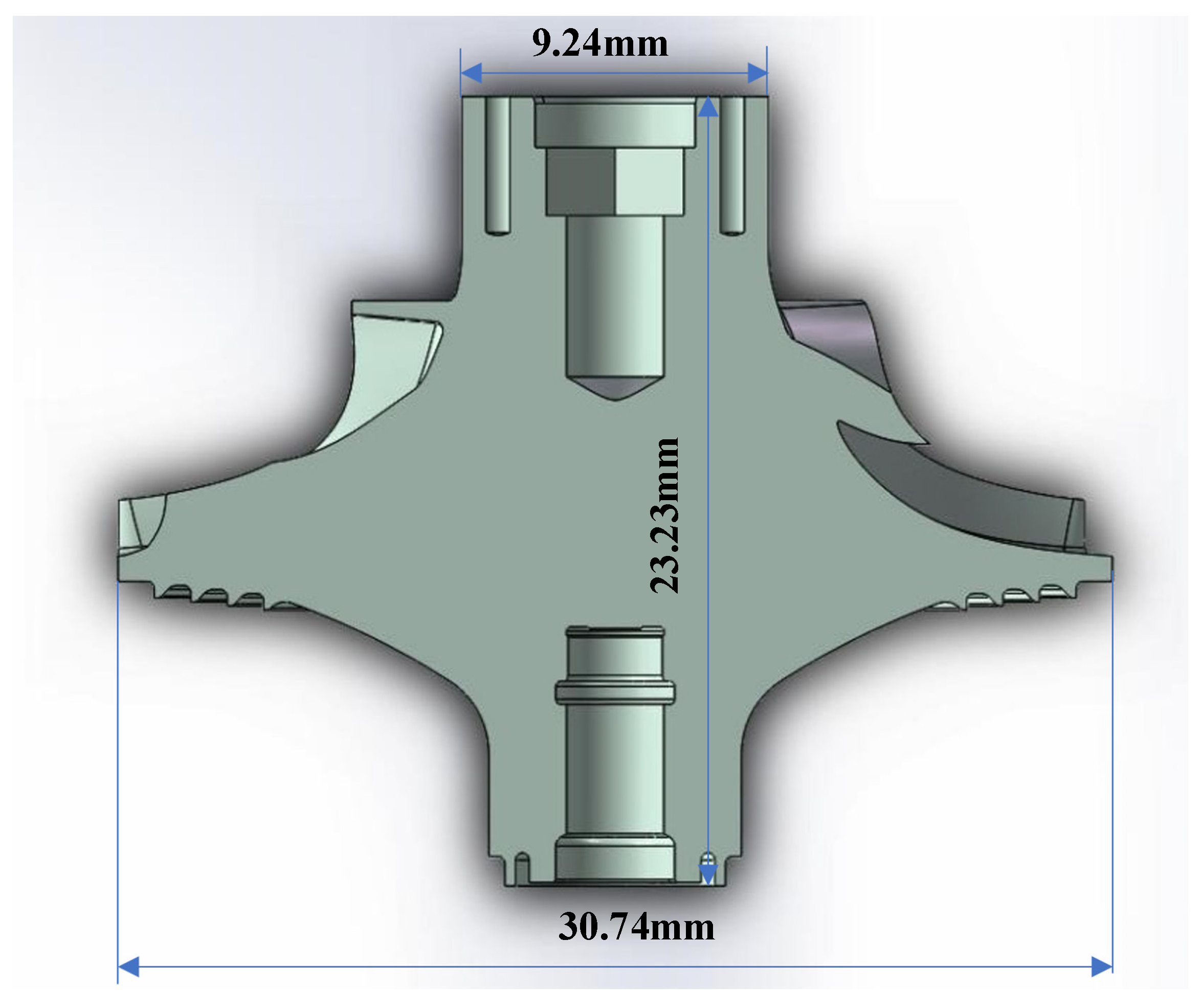

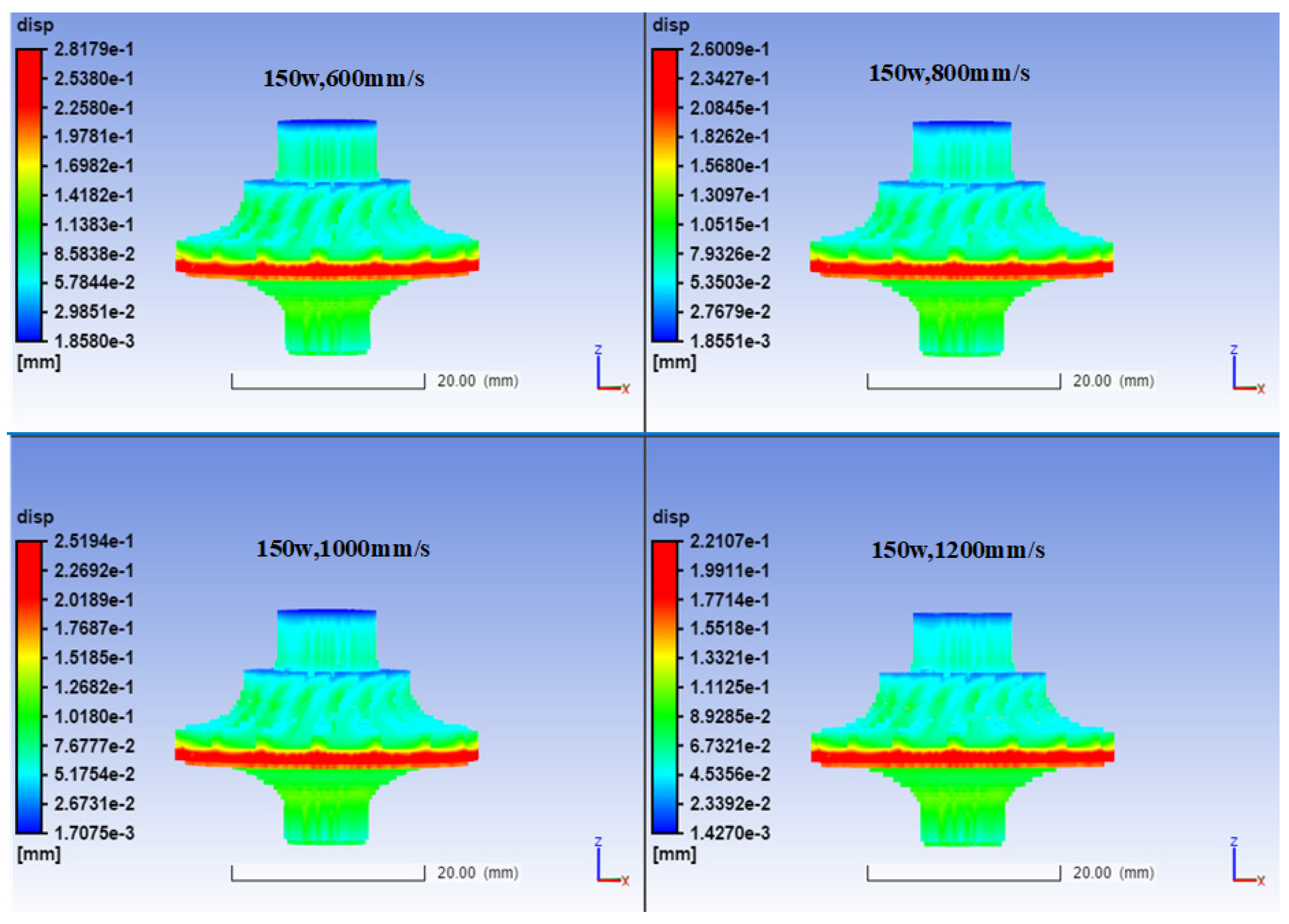
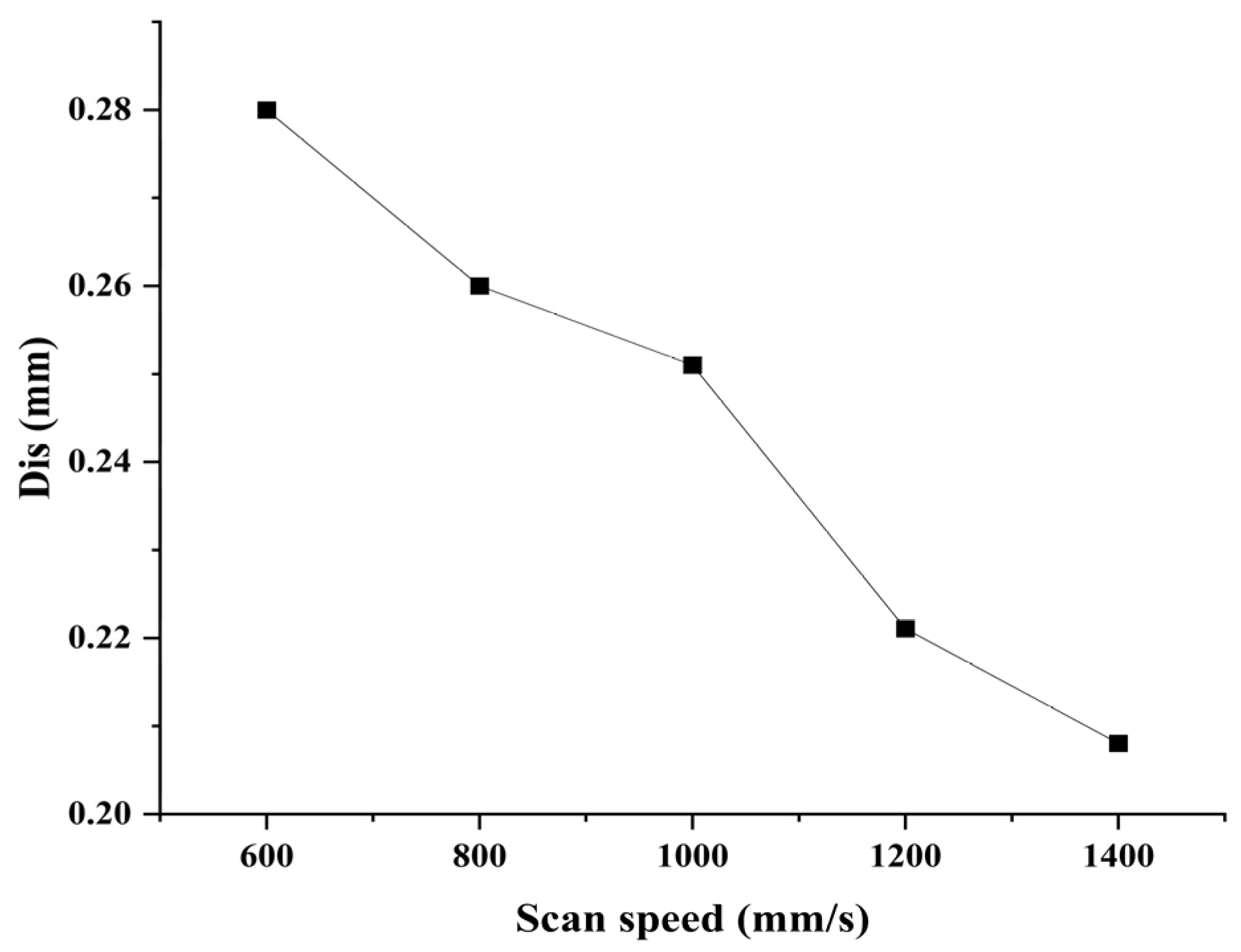
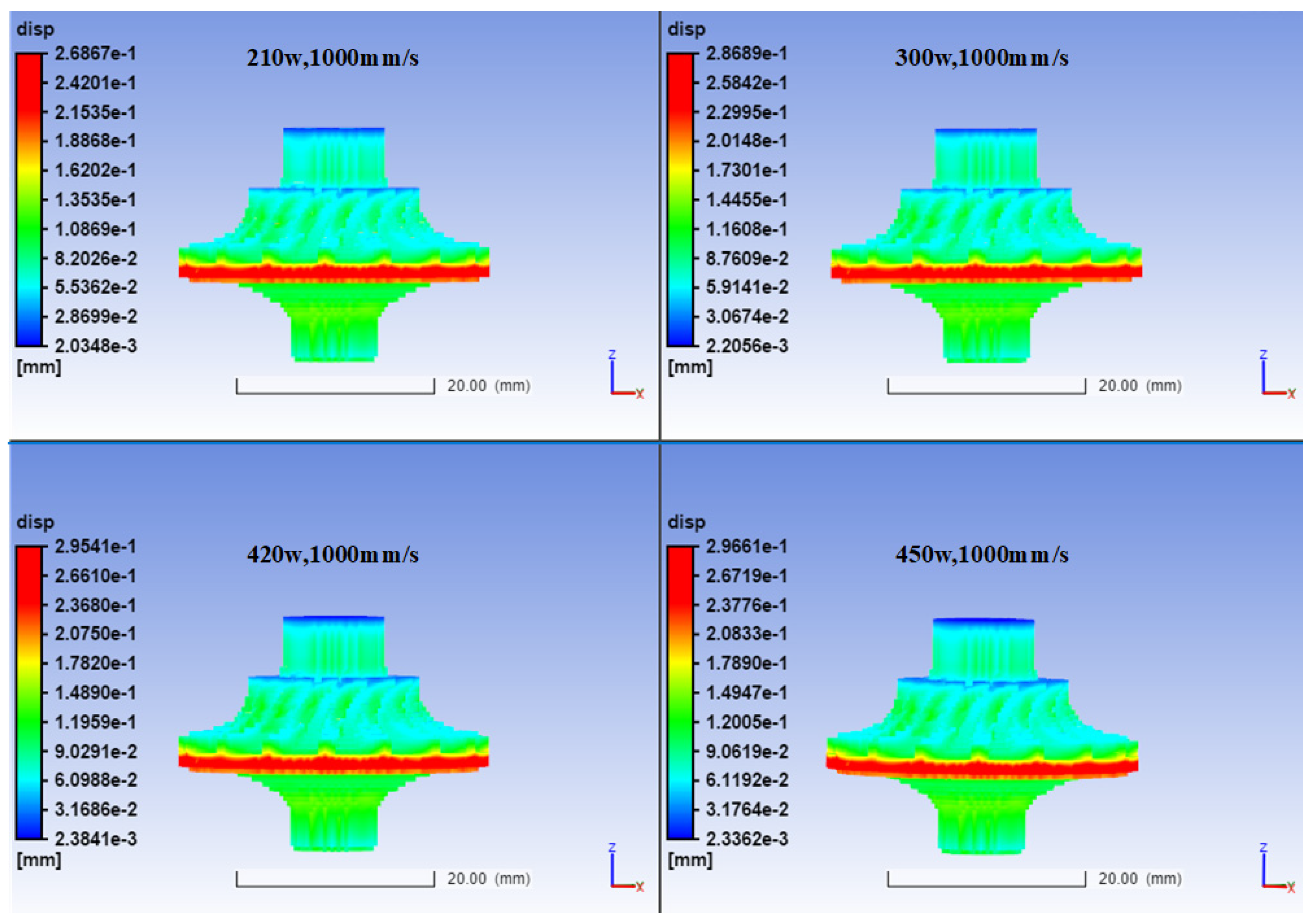
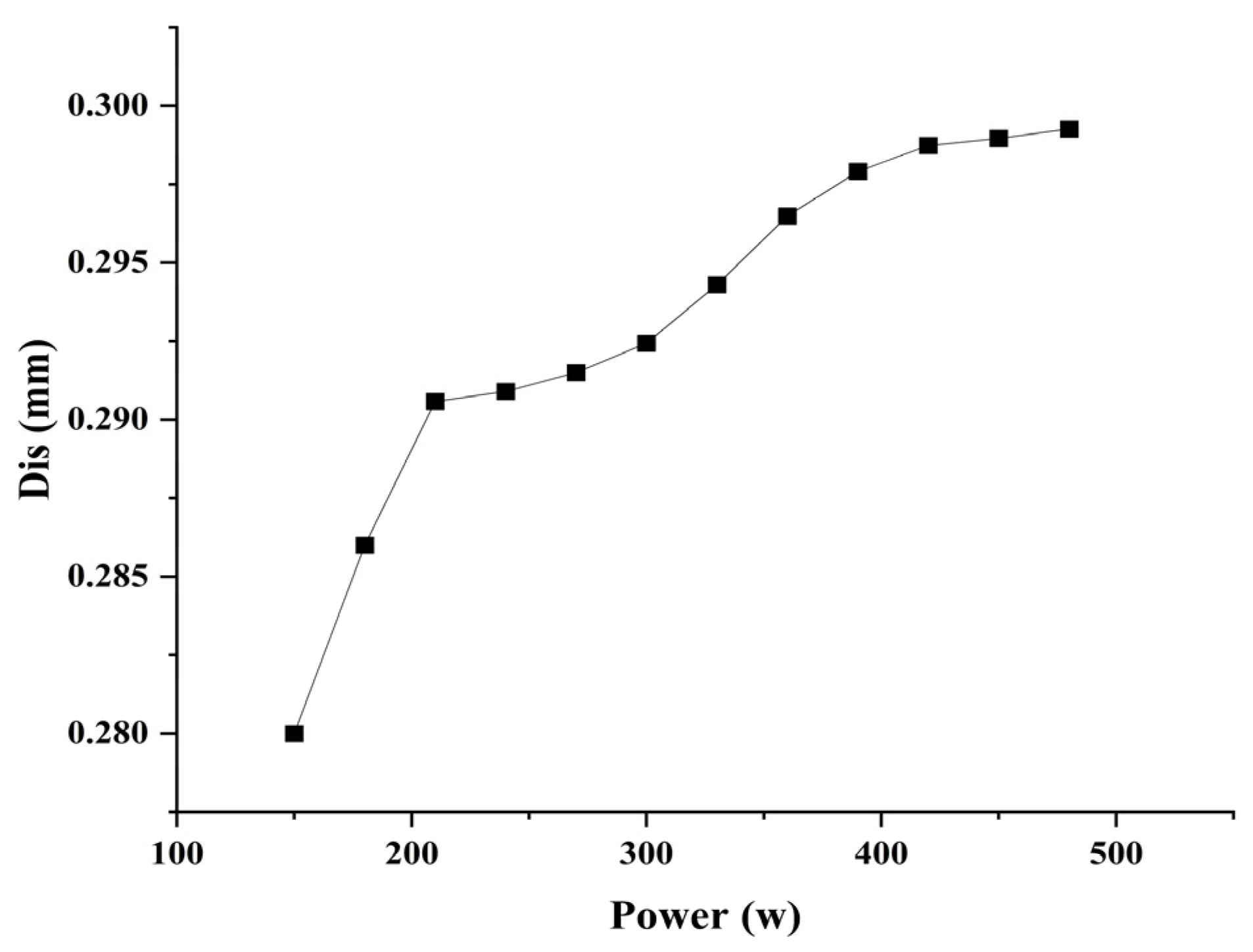


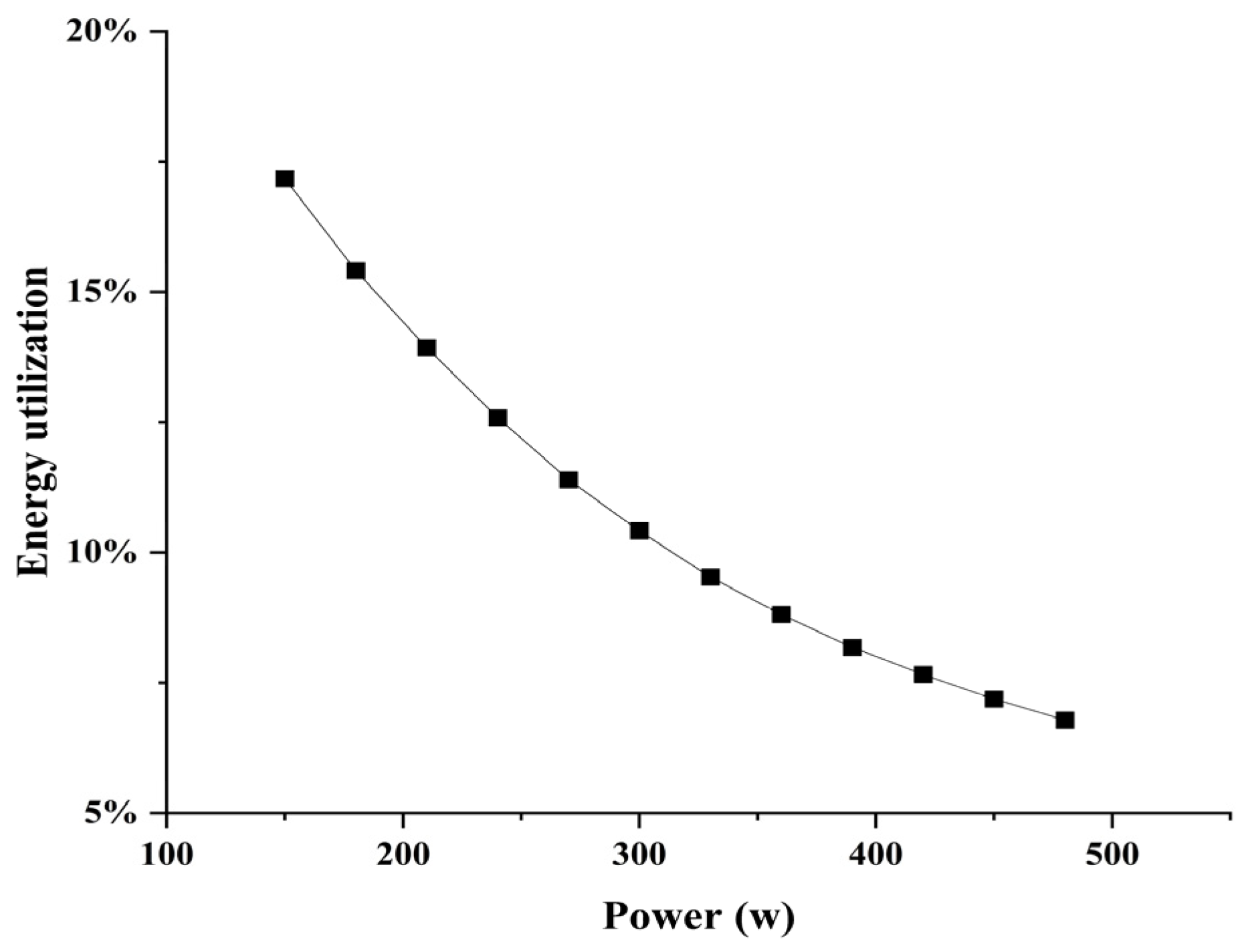
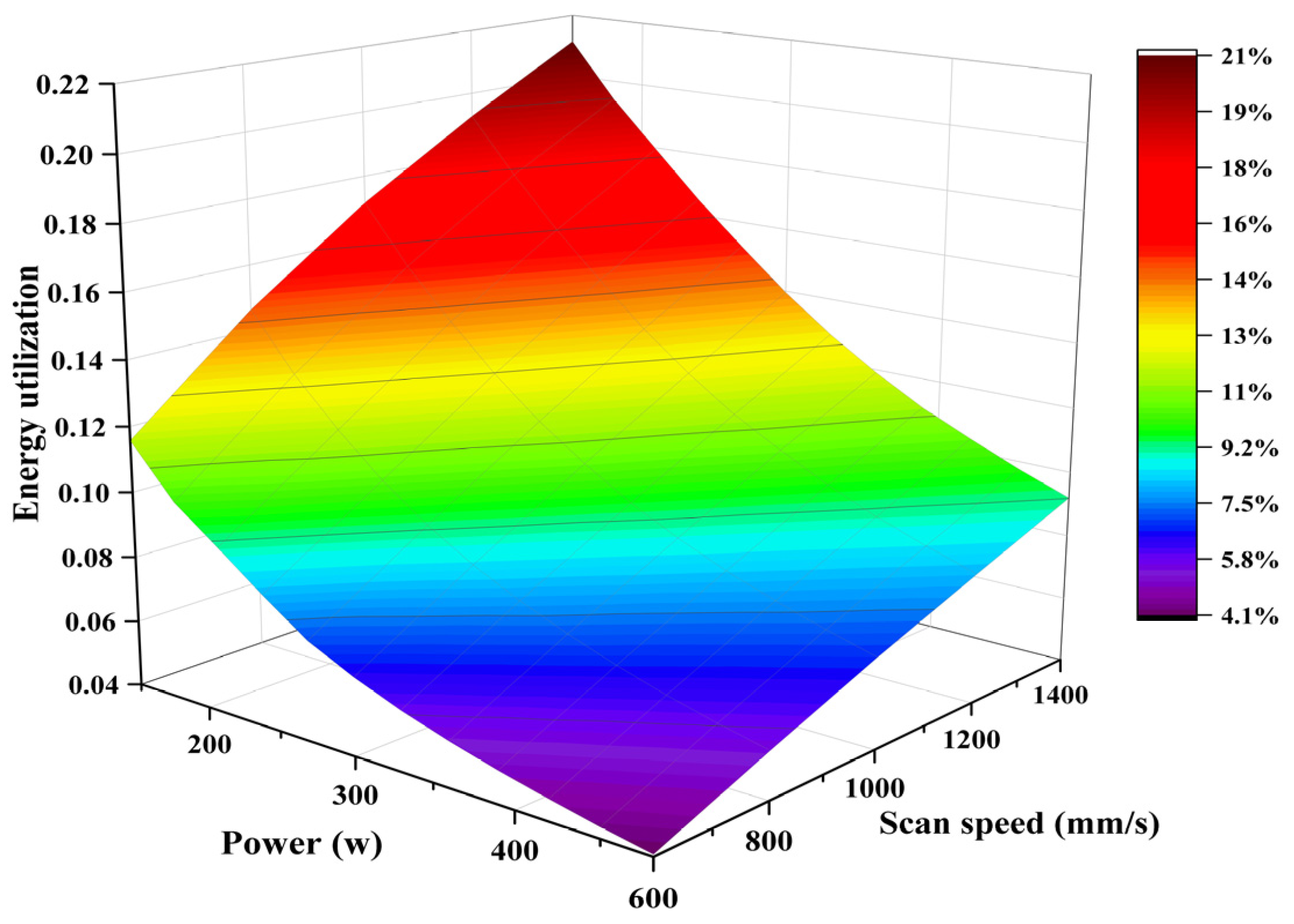
| Length (mm) | Width (mm) | Height (mm) | Blade Length (mm) |
|---|---|---|---|
| 30.74 | 30.74 | 23.23 | 10.81 |
| Property | Value |
|---|---|
| Yield strength | 1100 Mpa |
| Elastic Mmodulus | 110 Gpa |
| Poisson ratio | 0.34 |
| Density | 4510 kg/m3 |
| Liquid thermal conductivity | 7.9555 W/m·K |
| Specific heat | 0.72 J/(g·°C) |
| Coefficient of linear expansion | 8.6 × 10−6 |
| Solidus temperature | 1550 °C |
| Liquidus temperature | 1630 °C |
| Surface tension coefficient | 1.882 |
| Latent heat of fusion | 285 kJ/kg |
| Parameters | Value |
|---|---|
| Laser Thickness | 30 μm |
| Hatch Spacing | 140 μm |
| Baseplate Temperature | 80 °C |
| Laser Beam Diameter | 100 μm |
| Slicing Stripe Width | 10 mm |
| Starting Layer Angle | 57° |
| Layer Rotation Angle | 67° |
| Minimum Overhang Angle | 45° |
| Support Factor of Safety Coefficient | 1 |
| Support Yield Strength Ratio | 0.4375 |
| Support Strain Threshold | 10% |
| Part Strain Threshold | 20% |
| Strain Warning Factor | 0.8 |
Disclaimer/Publisher’s Note: The statements, opinions and data contained in all publications are solely those of the individual author(s) and contributor(s) and not of MDPI and/or the editor(s). MDPI and/or the editor(s) disclaim responsibility for any injury to people or property resulting from any ideas, methods, instructions or products referred to in the content. |
© 2023 by the authors. Licensee MDPI, Basel, Switzerland. This article is an open access article distributed under the terms and conditions of the Creative Commons Attribution (CC BY) license (https://creativecommons.org/licenses/by/4.0/).
Share and Cite
Guo, J.; Wang, Y.; Wang, Y.; Peng, S.; Wang, F. Simulation Study on the Energy Utilization Efficiency of a Turbine Impeller Based on a Selective Laser Melting Process. Appl. Sci. 2023, 13, 10657. https://doi.org/10.3390/app131910657
Guo J, Wang Y, Wang Y, Peng S, Wang F. Simulation Study on the Energy Utilization Efficiency of a Turbine Impeller Based on a Selective Laser Melting Process. Applied Sciences. 2023; 13(19):10657. https://doi.org/10.3390/app131910657
Chicago/Turabian StyleGuo, Jianan, Yongqiu Wang, Yingzan Wang, Shitong Peng, and Fengtao Wang. 2023. "Simulation Study on the Energy Utilization Efficiency of a Turbine Impeller Based on a Selective Laser Melting Process" Applied Sciences 13, no. 19: 10657. https://doi.org/10.3390/app131910657
APA StyleGuo, J., Wang, Y., Wang, Y., Peng, S., & Wang, F. (2023). Simulation Study on the Energy Utilization Efficiency of a Turbine Impeller Based on a Selective Laser Melting Process. Applied Sciences, 13(19), 10657. https://doi.org/10.3390/app131910657







